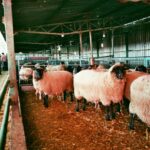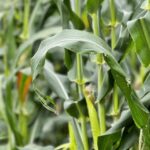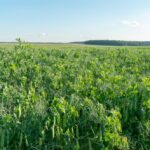Crop protection is a critical aspect of modern farming, ensuring that crops remain healthy and productive despite threats from pests, diseases, and weeds. One of the most effective tools in crop protection is the sprayer, which allows for precise application of pesticides, herbicides, and fertilizers. Using sprayers efficiently can significantly improve yields while minimizing input costs and environmental impact.
1. Importance of Crop Protection Sprayers
Sprayers help farmers protect their crops by applying chemicals evenly across the field, reducing pest infestations and disease outbreaks. Key benefits include:
- Improved pest and disease control: Properly applied pesticides prevent infestations that can destroy crops.
- Weed management: Herbicide application reduces competition for nutrients, water, and sunlight.
- Enhanced nutrient delivery: Sprayers can also be used for foliar feeding, ensuring plants receive essential nutrients directly.
- Reduced chemical waste: Precision spraying ensures chemicals are applied only where needed, minimizing environmental contamination.
2. Types of Crop Protection Sprayers
Choosing the right sprayer depends on farm size, crop type, and the level of precision required. Common types include:
- Handheld Sprayers: Ideal for small farms or spot treatments.
- Backpack Sprayers: Provide mobility and are useful for targeted applications.
- Boom Sprayers: Mounted on tractors for large-scale, uniform spraying.
- Airblast Sprayers: Use high-pressure air to deliver chemicals to orchard and vineyard crops.
- Drone Sprayers: Advanced technology that enables precision spraying in hard-to-reach areas.
3. Best Practices for Effective Spraying
To maximize the effectiveness of crop protection sprayers, follow these best practices:
- Calibrate sprayers correctly to ensure even distribution and avoid over- or under-application.
- Choose the right nozzle for the type of chemical being applied, as different nozzles affect droplet size and coverage.
- Spray at the right time to improve absorption and effectiveness—early morning or late evening applications reduce evaporation and drift.
- Monitor weather conditions as wind and rain can reduce the effectiveness of sprayed chemicals.
- Maintain sprayers regularly by cleaning tanks, nozzles, and filters to prevent clogging and contamination.
4. Enhancing Efficiency with Precision Agriculture
Modern farming integrates technology to improve spraying accuracy and efficiency:
- GPS-guided sprayers reduce overlaps and gaps, ensuring precise application.
- Variable rate technology (VRT) adjusts chemical dosage based on crop needs, reducing wastage.
- Drone and sensor-based spraying enables targeted applications in specific field zones, minimizing chemical use and improving sustainability.
5. Environmental and Safety Considerations
While sprayers improve crop health, improper use can harm the environment and human health. To ensure safe application:
- Follow recommended chemical dosages to prevent soil and water contamination.
- Wear protective gear when handling chemicals to reduce exposure risks.
- Store chemicals safely in labeled containers away from water sources.
- Use integrated pest management (IPM) strategies to reduce reliance on chemical sprays.
Crop protection sprayers play a vital role in maximizing harvests by safeguarding crops from pests, diseases, and weeds. By choosing the right sprayer, following best practices, and integrating precision agriculture, farmers can improve efficiency, reduce costs, and promote sustainable farming. Investing in modern spraying techniques ensures healthier crops and higher yields, ultimately boosting farm profitability.
Join 'Farmers Mag' WhatsApp Channel
Get the latest Farming news and tips delivered straight to your WhatsApp
CLICK HERE TO JOIN






